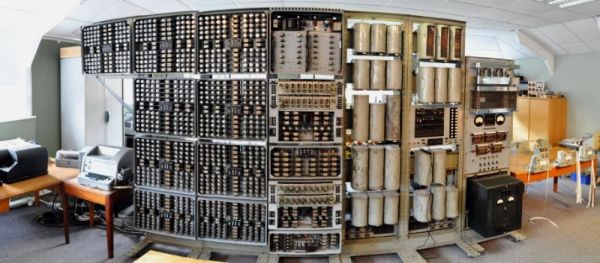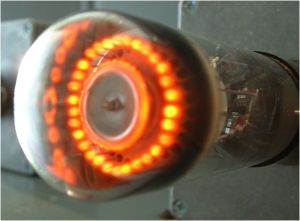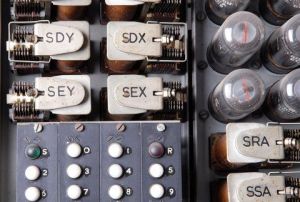'The WITCH.' World's Oldest Digital Computer Resurrected

After a three-year restoration project at The National Museum of Computing, the 61 year old Harwell Dekatron (aka WITCH) computer has been successfully rebooted, becoming the world's oldest original working digital computer.
This 2.5 tonne, 61-year-old computer from Harwell, with its flashing lights, clattering printers and readers provides an awe-inspiring display. And now these 828 flashing Dekatron valves, 480 relays and a band of paper tape readers will clatter back into action, providing a fascinating insight into just how far computing has come since.
 "In 1951 the Harwell Dekatron was one of perhaps a dozen computers in the world, and since then it has led a charmed life surviving intact while its contemporaries were recycled or destroyed." Kevin Murrell, trustee of TNMOC commented. "As the world's oldest original working digital computer, it provides a wonderful contrast to our Rebuild of the wartime Colossus, the world's first semi-programmable electronic computer."
"In 1951 the Harwell Dekatron was one of perhaps a dozen computers in the world, and since then it has led a charmed life surviving intact while its contemporaries were recycled or destroyed." Kevin Murrell, trustee of TNMOC commented. "As the world's oldest original working digital computer, it provides a wonderful contrast to our Rebuild of the wartime Colossus, the world's first semi-programmable electronic computer."
Built for reliability over speed in its time, the Harwell Dekatron computer automated the calculations of its original home: the Harwell Atomic Energy Research Establishment. It didn't work in binary, using a decimal system instead and displaying this via the flashing Dekatron valves.
The name WITCH (Wolverhampton Instrument for Teaching Computation from Harwell) came from a 1957 competition, when the computer became redundant, to offer it to an educational establishment. As you probably guessed from the name, Wolverhampton and Staffordshire Technical College won.
After being put on display in the former Birmingham Museum of Science and Industry, it was quietly dismantled and put into storage. But after the rediscovery by volunteers at TNMOC in 2008, the WITCH was brought back to life. It's been a hugely difficult task, due to the lack of support for such antique computer systems.
 Delwyn Holroyd, a TNMOC volunteer who led the restoration team, said: "The restoration was quite a challenge requiring work with components like valves, relays and paper tape readers that are rarely seen these days and are certainly not found in modern computers. Older members of the team had to brush up on old skills while younger members had to learn from scratch!"
Delwyn Holroyd, a TNMOC volunteer who led the restoration team, said: "The restoration was quite a challenge requiring work with components like valves, relays and paper tape readers that are rarely seen these days and are certainly not found in modern computers. Older members of the team had to brush up on old skills while younger members had to learn from scratch!"
"I first encountered the Harwell Dekatron as a teenager in the 1970s when it was on display in the Birmingham Museum of Science and Industry -- and I was captivated by it." Kevin Murrell recalls. "When that Museum closed, it disappeared from public view, but four years ago quite by chance I caught a glimpse of its control panel in a photograph of stored equipment. That sparked our ideas to rescue it and we hunted it down."
Source: The National Museum Of Computing

